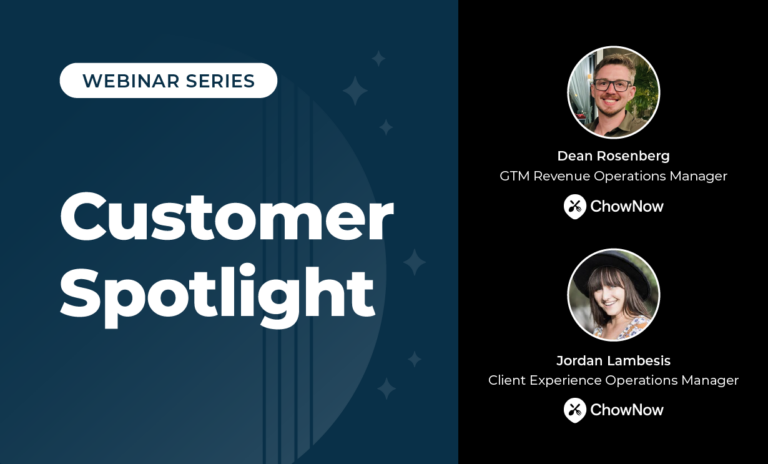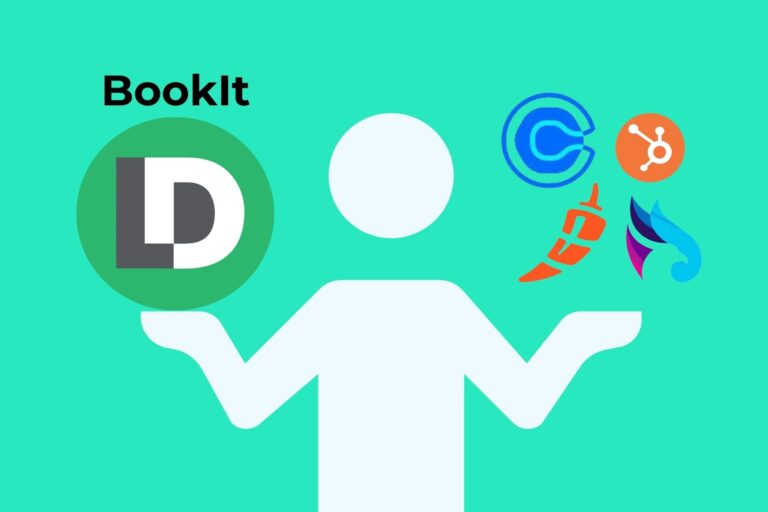Let’s not mince words. You don’t successfully schedule meetings for events by directing your teams to a shared Google Sheet with some messy, manual process.
It’s a logistical nightmare full of human error and wasted time.
That’s why the LeanData Marketing and Sales teams used BookIt for Forms, our automated meeting scheduler, to book a whopping 223 meetings at two recent events.
Because booked meetings lead to pipeline which leads to closed deals.
But securing meetings is no big secret. There’s simply a better way and we’re going to show you how.

Why You Need to Book Meetings at Events
No doubt the economic downturn of 2023 tightened marketing budgets. Companies cut back on field events by sending smaller teams, buying smaller booths, and often skipping trade shows altogether.
As a result, marketers and sales reps face a lot more push back when providing rationale for event spending. Company leadership may suggest that employees simply attend a conference and network there.
Booked Meetings Proves Event ROI
Marketers often struggle to prove event ROI and justify expenses or sponsorship levels. Booked meetings help prove why your company is going to the event. If you book meetings, the event becomes more measurable. Meetings can be tied to pipeline and revenue.
Plus, by relying on meeting KPIs, you won’t have to chase sales reps down to gather feedback. Not to mention, sales reps will spend more time with qualified prospects.
Another benefit of booking meetings is that often the field marketer, or other employee who coordinates the event, will not be there in-person to drive ROI. Booking meetings helps the sales reps succeed regardless of hands-on marketing support.
Last, by booking meetings prior to the event, you’re nurturing the buyer relationship even before the event starts.
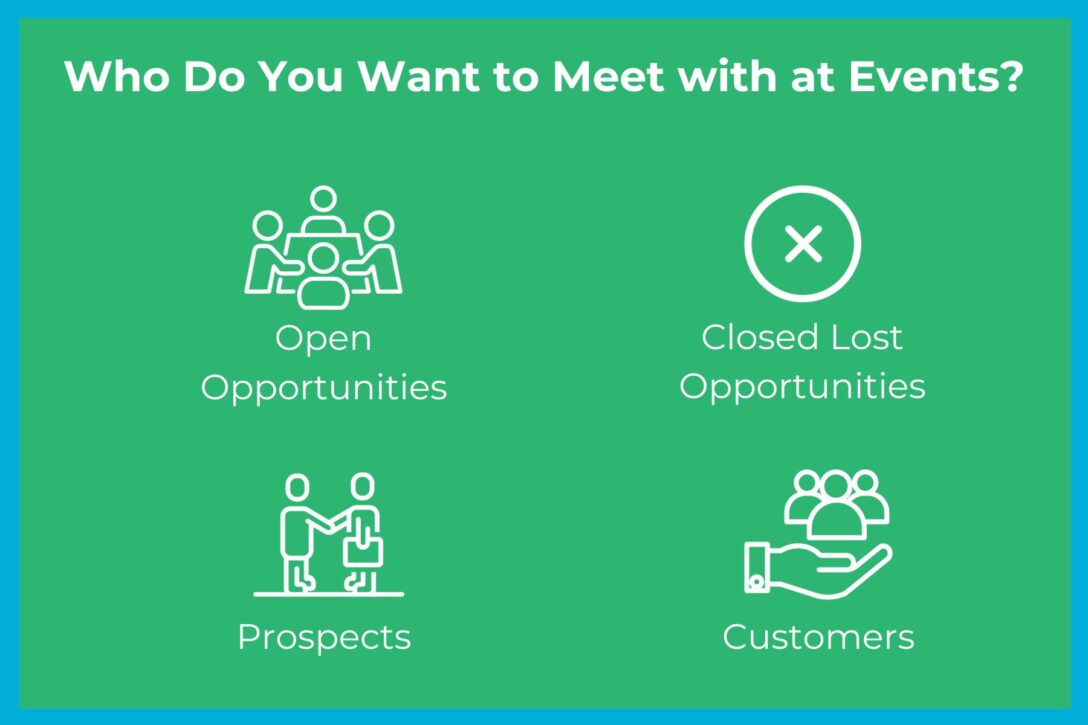
Who Are You Trying to Get Meetings With?
Now hang on just a minute before you spam your entire database of contacts. Just who are you trying to get meetings with? We suggest these four categories:
- Open Opportunities: resolve concerns and move the deal forward.
- Closed Lost: open the conversation again.
- Prospects: guide them along the buying journey with more information.
- Customers: find out which customers will be there and nurture that relationship.
And, don’t forget to leverage lists provided by the event organizers. Even if the list is not available, look for sponsors and speakers on the event website. Include them in your outreach.
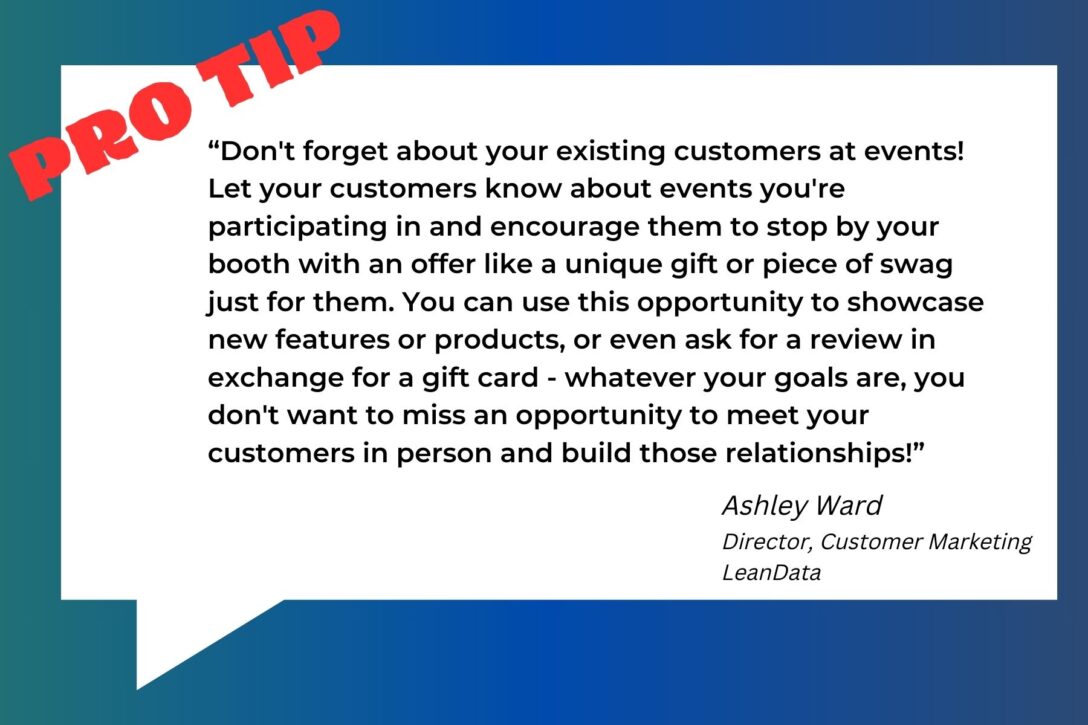
How Are You Trying to Get Meetings?
For pre-event outreach, get input from both sales and marketing to build email templates and sequences. Remember that event attendees get emails from many vendors, so try to make a human connection.
Talk about their goals for the conference and the sessions they may want to attend. If you’re multithreaded in an account, tap into a warm introduction from a mutual acquaintance, and provide multiple people with different sessions they may be interested in.
Clearly, personalization is key. The email you send to your customers will contain a completely different message than the email to prospects. In addition, you can make this process easier by providing sales reps with templates for one-to-one emails.
Using Incentives to Book Meetings
Listening to a sales pitch is never top-of-list for event attendees. In fact, it’s often a turn off.
So, if it’s within your budget, include some kind of incentive that will help you rise above the noise and encourage attendees to schedule a meeting or demo. Since not all prospects share the same interests, offer a few different incentives to determine the best fit for your audience.
Not everyone will find out about your incentives during the event. So, announcing incentives in advance via email, linking to a landing page with your booking form, is helpful. This gives you the chance to talk about incentives in a space that’s less noisy.
Prospects Just Looking for Free Swag

If you’re concerned that a prospect is only taking a meeting for a gift, then test and measure the process. What is your win rate on incentivized vs. non-incentivized opportunities? What was your pipeline conversion rate? How much time did it take away from your sales team? Did it help your team hit goals?
Last, use caution with demo incentives. Especially in the enterprise and public sectors, companies may have restrictions on employees accepting gifts for any reason.
Now Let’s Incentivize Your Sales Team

Sales is a tough job. Gamification makes it more engaging and more fun. So in addition to offering incentives to your prospects, it also helps to motivate your Sales team with SPIFFs (sales performance incentive funds). These short-term bonuses are designed to motivate employees to achieve specific goals or targets — like meetings booked. Cash is great, but SPIFFS can be many different things:
- Tickets to a sporting event
- Concert tickets
- Weekend stay at a five-star hotel
- Travel vouchers
- Fine-dining experience
- Tech toys
- More PTO
- Spa treatments
- Gift cards
- Team activities
- Memberships
Be sure to recognize and celebrate achievements. A little recognition can pay dividends in morale and loyalty.
Benefits of Meeting Scheduling Tools Like BookIt for Forms
Automated scheduling tools, like LeanData’s BookIt for Forms, streamline the scheduling process. They reduce the time, effort, and energy required to book a meeting by eliminating the back-and-forth of traditional scheduling.
With an automated meeting scheduling tool, customers complete a form and the software immediately finds the calendar of the best representative to meet their needs.
Then, the customer selects the date and time that works best for them. And just like that, the meeting is booked. Plus, the calendaring tool automates all reminders and notifications. This ensures the contact will show up.
Another perk of automated meeting scheduling is the ability to qualify accounts before the meeting is set. This ensures time is not wasted at an event, meeting with the wrong contacts. For example, BookIt for Forms integrates with Typeform and Gravity Forms so companies can instantly qualify prospects with their own lead capture form.
Using Meeting Scheduling Tools During Events
As mentioned previously, we recommend you create a landing page for each event and include your booking form on that page. Then, during the event, sales reps can use the landing page to book follow-up meetings. Here’s a pro tip: customize your booking form to include a notes section so that staff can share important information with other sales reps.
This process helps with conversion rates because you’re capturing the prospect’s interest in the moment they’re most likely to accept a future meeting. Frankly, it’s harder to reach people post-event because they are inundated with emails from other sponsors.
Further, meetings booked during events have been prequalified by your staff working the booth. These meetings will naturally have higher conversion rates.
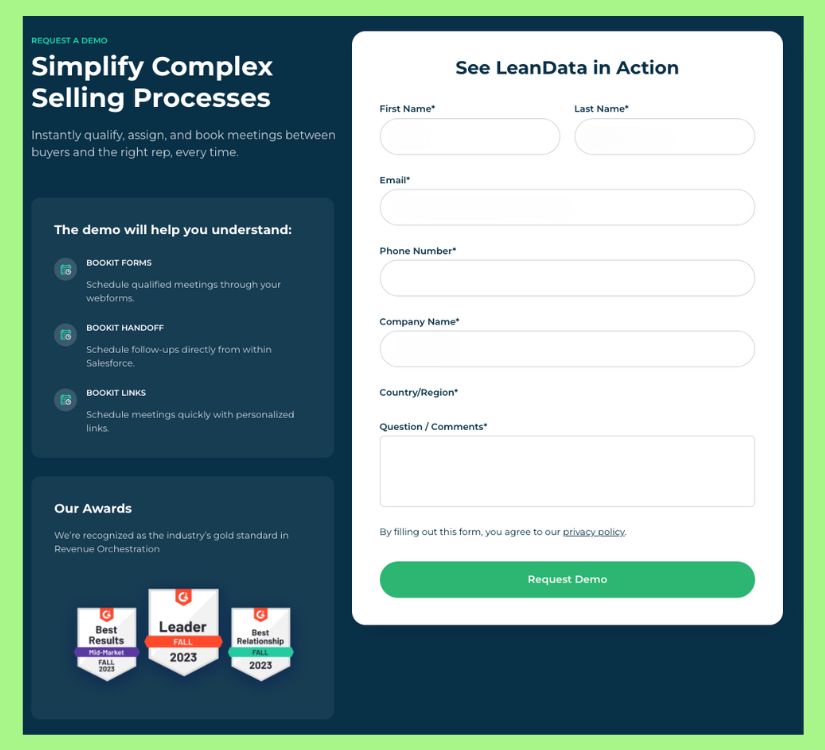
Don’t Plan Another Event Without Meeting Scheduling Tools
Leveraging automated meeting scheduling tools like BookIt for Forms is the sure way to support event ROI. The link between booked meetings, pipeline growth, and closed deals is undeniable.
Moreover, the benefits of using meeting scheduling tools extend beyond the pre-event phase. They continue to streamline the process and improve the quality of interactions during and after the event itself.
So, if you’re still wrangling with that ‘ole meeting-tracking spreadsheet, it’s time for a change. Your pipeline will thank you.






